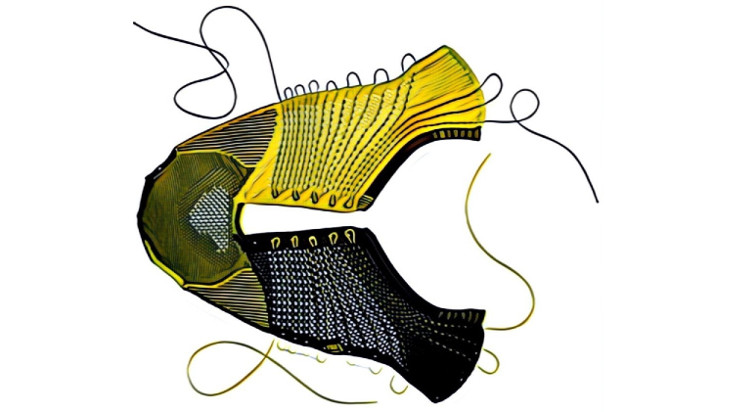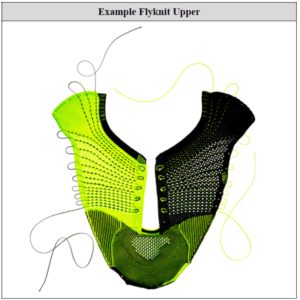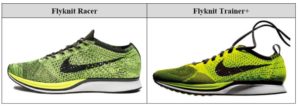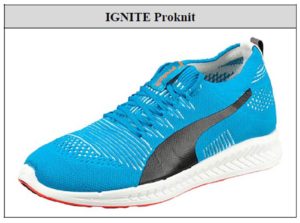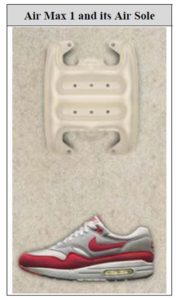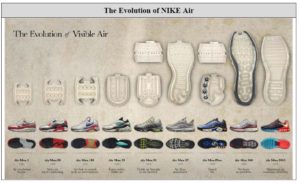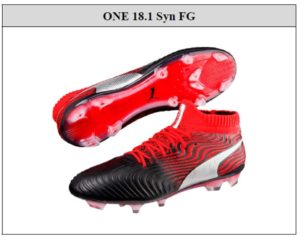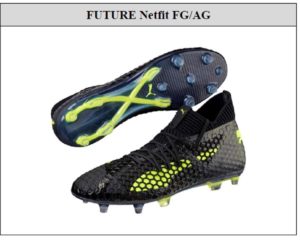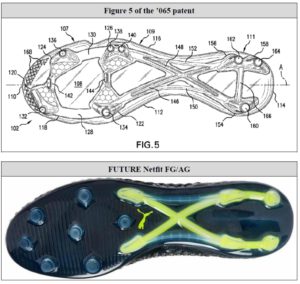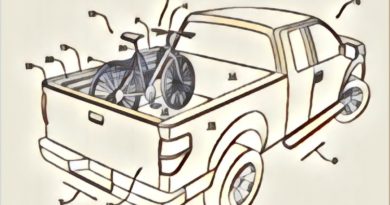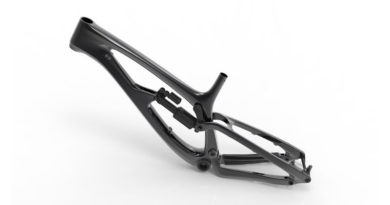Nike just does it to Puma in Lawsuit over 7 Shoe Patents

There is no better way to launch a blog than by covering some juicy litigation, and boy do we have one for you today. In fact, we are launching with this post, 30 days before schedule, because it is just too good to pass up. So, bear with us over the next month as we populate the site with great content covering the innovations in the athletic industries. Thank you!
Yesterday Nike dropped a bomb on Puma by filing a patent infringement complaint in Massachusetts and made it all the way to the second paragraph before taking a cheap shot.
NIKE’s mission is to “bring inspiration and innovation to every athlete*1in the world.” NIKE fulfills that mission by investing heavily in research, design, and development; creating game-changing technologies and products that enhance athletic performance, reduce injury, and maximize comfort while reducing waste.
Puma, in contrast, has forgone independent innovation and is instead using NIKE’s technologies without permission. Puma is using NIKE’s Flyknit, Air, and cleat assembly technologies. NIKE has asked Puma to stop. Puma refuses to do so.
NIKE therefore brings this patent lawsuit to defend its investments in innovation and to protect its technologies. NIKE alleges, with knowledge as to its own acts and on information and belief as to other matters, as follows:
I love how they use the language “in contrast, has forgone independent innovation.” Sure, it is absolutely meaningless, but illustrates there may be just a tinge of bad blood!
What is the case all about? Good question, but first it is helpful to read Nike’s overview of the Flyknit Technology.
11. NIKE’s Flyknit technology relates to footwear uppers.
12. Articles of footwear typically include two primary elements: an upper and a sole structure. The upper is the portion that covers the foot. The sole structure is the portion below the upper between the foot and the ground.
13. In the past, footwear manufacturers typically made uppers by piecing together multiple different materials to impart different properties to different areas of the upper. For example, a manufacturer may use leather materials in the toe and heel areas of the upper to impart a relatively high degree of wear-resistance, and a manufacturer may use synthetic or natural textile materials in other areas of the upper to impart flexibility and air-permeability.
14. The conventional way of making uppers had certain inefficiencies. It often required sourcing materials from multiple suppliers, operating multiple machines, and coordinating multiple assembly line techniques, manufacturing steps, and individuals.
15. NIKE recognized those inefficiencies and committed significant time and resources to innovating solutions.
16. Through years of research, design, and development, NIKE invented novel and non-obvious ways to form uppers from a single knitted material while still providing different textures or properties to different areas of the uppers. This technology became Flyknit.
17. Flyknit combines high strength fiber technology with advanced manufacturing techniques, allowing designers to precisely micro-engineer every stitch of a footwear upper. The result is a featherweight, form-fitting, and virtually seamless sock-like upper, scientifically tuned to provide areas of support, flexibility, and breathability where athletes need them most. The illustration below shows a Flyknit upper detached from a sole structure.
18. NIKE introduced its first Flyknit footwear in early 2012. NIKE called that footwear the Flyknit Racer and the Flyknit Trainer+. The illustrations below show examples of a Flyknit Racer and a Flyknit Trainer+.
19. The industry praised and celebrated NIKE’s Flyknit technology.
20. Industry commentators lauded how “NIKE Flyknit revolutionized the age-old craft of shoemaking,” and they characterized Flyknit as a “quantum leap” in the industry. (Exs. H, I.)
21. Athletes immediately began taking advantage of Flyknit technology. For example, marathon runner Abel Kirui wore Flyknit footwear during his silver medal-winning performance at the 2012 London Olympics.
22. Since then, Flyknit has proven to be one of NIKE’s most successful technologies among professional athletes and casual consumers alike.
23. Flyknit is a platform technology that NIKE incorporates throughout its product categories, such as Running, NIKE Basketball, the Jordan Brand, Soccer, Men’s Training, Women’s Training, Tennis, and Sportswear. The illustrations below show examples of the proliferation of Flyknit throughout NIKE’s product categories.
24. Flyknit technology is an important component of NIKE’s strategy and it is integral to NIKE’s success.
25. NIKE has taken steps to protect its Flyknit technology, including by filing and obtaining patents around the world.
26. NIKE owns more than 300 issued utility patents directed to its Flyknit technology.
27. Relevant to this dispute, NIKE owns all right, title, and interest in and to the following U.S. patents directed to certain aspects of Flyknit technology: 7,637,032 (the “’032 patent”), 8,266,749 (the “’749 patent”), 9,078,488 (the “’488 patent”), and 9,375,046 (the “’046 patent”) (collectively, the “Flyknit Patents”)
What do they allege Puma has done with respect to Flyknit technology?
32. Over three years after NIKE introduced Flyknit, Puma began using the Flyknit technology without NIKE’s permission.
33. Puma introduced its first knitted footwear, the IGNITE Proknit, in October 2015. (Ex. J.)
34. Puma has promoted the IGNITE Proknit as having a “fully knit upper” that “gives it lightweight breathability, an incredibly comfortable fit, and fresh style.” The illustration below shows an example IGNITE Proknit.
35. Industry commentators noted the IGNITE Proknit was Puma’s attempt to join the “the knit sneaker craze” that NIKE created with Flyknit. (Ex. K.)
36. Puma has since released additional knitted footwear products, including at least the IGNITE Speed Netfit, the Mostro Bubble Knit, and the Jamming. The illustrations below show examples of the IGNITE Speed Netfit, the Mostro Bubble Knit, and the Jamming.
37. Puma’s IGNITE Proknit, IGNITE Speed Netfit, Mostro Bubble Knit, Jamming, and potentially other Puma knitted footwear, use NIKE’s Flyknit technology and practice the inventions covered by one or more claims of NIKE’s Flyknit Patents.
38. Puma’s IGNITE Proknit practices the invention claimed in NIKE’s ’032 patent. For example, as can be seen in the illustration above, the IGNITE Proknit is an article of footwear with an upper substantially constructed from textile material, wherein the upper includes an exterior portion substantially constructed from knitted textile material. The exterior portion includes a first region having stability ribs integrally formed in the knitted textile material and a second region continuous with the first region, the second region not including stability ribs. A first portion of the first region extends along a forefoot portion of the upper and a second portion of the first region extends along a lateral midfoot side of the upper. A portion of the second region extends along a junction between the upper and the sole and between the first portion of the first region and the second portion of the first region. The IGNITE Proknit also has a sole engaged with the upper.
39. Puma’s IGNITE Proknit, IGNITE Speed Netfit, Mostro Bubble Knit, Jamming, and potentially other Puma knitted footwear, practice the invention claimed in NIKE’s ’749 patent. For example, on information and belief, and as can be seen in the illustrations above, Puma manufactures its knitted footwear by simultaneously knitting a textile element with a surrounding textile structure, the knitted textile element having at least one knitted texture that differs from a knitted texture in the surrounding knitted textile structure; removing the knitted textile element from the surrounding knitted textile structure; and incorporating the knitted textile element into the article of footwear.
40. Puma’s IGNITE Speed Netfit practices the invention claimed in NIKE’s ’488 patent. For example, as can be seen in the illustration above, the IGNITE Speed Netfit is an article of footwear including an upper and a sole structure attached to the upper, the upper incorporating a knitted component formed of unitary knit construction, the knitted component comprising: at least one lenticular knit structure including a first portion and a second portion disposed on opposite sides of the lenticular knit structure; and a base portion disposed adjacent to the at least one lenticular knit structure; wherein the at least one lenticular knit structure extends away from the base portion on an exterior surface of the upper; and wherein the first portion of the at least one lenticular knit structure is associated with a first visual effect when the upper is viewed from a first viewing angle and the second portion of the at least one lenticular knit structure is associated with a second visual effect when the upper is viewed from a second viewing angle that is different than the first viewing angle.
41. Puma’s IGNITE Speed Netfit practices the invention claimed in NIKE’s ’046 patent. For example, as can be seen in the illustration above, the IGNITE Speed Netfit is an article comprising: a plurality of webbed areas having a front surface, the webbed areas configured to move between a neutral position and an extended position, the webbed areas being biased to move toward the neutral position, and a plurality of tubular structures that are adjacent to the webbed areas, the tubular structures; wherein at least one of the webbed areas or tubular structures is configured to stretch to move the webbed areas to the extended position in response to a force applied to the article; wherein in the neutral position, a first area of the front surface is hidden from visual observation from a first viewing perspective, and wherein in the extended position, the first area of the front surface is revealed for visual observation from the first viewing perspective. Pursuant to 35 U.S.C. § 287, NIKE notified Puma on multiple occasions that it infringes NIKE’s Flyknit Patents by making, using, selling, offering to sell, and/or importing certain of its knitted footwear into the United States. (Exs. L–O.NIKE asked Puma to stop infringing its Flyknit Patents. (Id.)
42. Puma continues to infringe NIKE’s Flyknit Patents by making, using, selling, offering to sell, and/or importing infringing knitted footwear into this District and elsewhere in the United States without the consent or authorization of NIKE.
43. On information and belief, Puma promotes and sells its infringing footwear at retail stores throughout the United States, including at retail stores located in Massachusetts. (Ex. P.)
44. On information and belief, Puma also promotes and sells its infringing footwear nationwide, including in Massachusetts, through its website at http://us.puma.com. (Ex. Q.)
BUT, this dispute is not just about Flyknit technology, oh no. The complaint also contains allegation regarding their “Air Technology.” I will let them explain:
47. NIKE Air technology relates to footwear sole structures.
48. NIKE Air generally relates to “Air Sole” units: tough, yet flexible bags filled with gas or fluid, located in the sole structure of footwear.
49. NIKE launched footwear containing its NIKE Air technology in 1987.
50. NIKE called its first NIKE Air shoe the Air Max 1. The Air Max 1 featured an Air Sole unit placed in the rear midsole. The illustration below shows an Air Max 1 and its Air Sole.
51. NIKE continued to innovate its NIKE Air technology over the following three decades: increasing bladder size, adding bladders to the forefoot, improving flexibility, and experimenting with various gases and fluids to fill the bladders. The illustrations below show the evolution of NIKE Air technology over the years.
52. NIKE Air technology provides many benefits. For example, NIKE Air reduces the weight of the footwear, without reducing performance, by replacing conventional foam with airfilled bags. Lighter footwear converses the athlete’s energy during performance.
53. NIKE Air also provides cushioning benefits. As the foot strikes the ground, NIKE Air absorbs impact forces that would otherwise be exerted on the athlete’s muscles, joints and tendons, protecting the body against fatigue and stress. After impact, NIKE Air units return to their original shape, ready for the next impact force.
54. Like Flyknit, NIKE Air is a platform technology that NIKE incorporates throughout its product categories, such as Running, NIKE Basketball, the Jordan Brand, Soccer, Men’s Training, Women’s Training, and Sportswear.
55. NIKE Air is an important component of NIKE’s strategy and it is integral to NIKE’s success.
56. NIKE has taken steps to protect its NIKE Air technology, including by filing and obtaining patents around the world.
57. NIKE owns more than 800 utility patents directed to its NIKE Air technology.
58. Relevant to this dispute, NIKE owns all right, title, and interest in and to U.S. Patent No. 7,401,420 (the “’420 patent”) directed to certain aspects of NIKE Air technology.
59. The U.S. Patent Office duly and legally issued the ’420 patent on July 22, 2008. A true and correct copy of the ’420 patent is attached as Complaint Exhibit E.
Did you catch that? NIKE owns more than 800 utility patents directed to its NIKE Air technology!
What do they allege Puma has done with respect to Air technology?
60. Thirty years after NIKE Air revolutionized the footwear industry, Puma began using NIKE Air technology without NIKE’s permission.
61. Puma introduced its first footwear with a fluid-filled bladder, the Jamming, in November 2017. (Ex. R.)
62. Puma has promoted the features of the Jamming as including: “evoKNIT upper provides form-fitting comfort,” “free-floating NRGY beads made from high cushioning PU foam adjust to your foot as you run for adaptive support,” and “translucent TPU encases the multicoloured NRGY beads, providing a visually stunning outsole design.” (Ex. S.) The illustration below shows an example IGNITE Proknit and its fluid-filled bladder.
63. Puma’s Jamming uses NIKE Air technology and practices the invention claimed in NIKE’s ’420 patent. For example, the Jamming is an article of footwear comprising: a sole structure incorporating a fluid-filled bladder and a reinforcing structure secured to the bladder, the sole structure having an upper surface and an opposite lower surface, the upper surface forming a ridge that defines a first portion of a lasting surface, at least a portion of the ridge being an inclined surface formed by the reinforcing structure and located over the bladder, the bladder defining a second portion of the lasting surface; and an upper secured directly to the first portion of the lasting surface and the second portion of the lasting surface.
64. Puma infringes NIKE’s ’420 patent by making, using, selling, offering to sell, and/or importing its infringing Jamming footwear in this District and elsewhere in the United States without the consent or authorization of NIKE.
65. Pursuant to 35 U.S.C. § 287, NIKE notified Puma that it infringes NIKE’s ’420 patent by making, using, selling, offering to sell, and/or importing at least its Jamming footwear into the United States. (Ex. O.)
66. NIKE asked Puma to stop infringing its ’420 patent. (Id.)
67. Puma continues to infringe NIKE’s ’420 patent by making, using, selling, offering to sell, and/or importing its Jamming footwear into this District and elsewhere in the United States without the consent or authorization of NIKE.
68. On information and belief, Puma promotes and sells its infringing Jamming footwear at retail stores throughout the United States, including at retail stores located in Massachusetts. (Ex. P.)
69. On information and belief, Puma also promotes and sells its infringing Jamming footwear nationwide, including in Massachusetts, through its website at http://us.puma.com. (Ex. Q.)
BUT, this dispute is not just about Flyknit technology & Air technology, oh no. The complaint also contains allegation regarding their “Soccer Cleat Assembly Technology.” I will let them explain:
70. NIKE introduced its first soccer cleat in 1971: a black-and-white molded rubber cleat called “The Nike.” The illustration below shows an example of “The Nike.
71. Over the next 47 years, NIKE leveraged research, testing, and insight from the world’s best players—including Mia Hamm, Ronaldinho, Ronaldo, and Neymar—to redefine cleated footwear. The illustrations below show examples of NIKE cleated footwear today.
72. NIKE’s cleat assemblies combine, among other things, strategically placed cleats, support bars, and sections of varying stiffness to improve flexibility, foot control, balance, and propulsion; while also increasing comfort and reducing fatigue.
73. NIKE’s cleat assemblies are an important component of NIKE’s strategy and they are integral to NIKE’s success.
74. NIKE has taken steps to protect its cleat assembly technologies, including by filing and obtaining patents around the world.
75. NIKE owns more than 200 utility patents directed to its cleat assembly technologies.
76. Relevant to this dispute, NIKE owns all right, title, and interest in and to U.S. Patent Nos. 6,973,746 (the “’746 patent”) and 9,314,065 (the “’065 patent”) directed to certain aspects of NIKE cleat assembly technology.
77. The U.S. Patent Office duly and legally issued the ’746 patent on December 13, 2005. A true and correct copy of the ’746 patent is attached as Complaint Exhibit F.
78. The U.S. Patent Office duly and legally issued the ’065 patent on April 19, 2016. A true and correct copy of the ’065 patent is attached as Complaint Exhibit G.
What do they allege Puma has done with respect to Cleat Assembly technology?
79. Puma introduced its evoSPEED SL FG in 2015. (Ex. T.) Puma introduced its evoSPEED SL II in 2016. (Ex. U.) The illustrations below show examples of the evoSPEED SL footwear.
80. Puma introduced its ONE 18.1 Syn FG footwear in 2018. (Ex. V.) The illustration below shows an example of the ONE 18.1 Syn FG footwear.
81. Puma introduced its FUTURE Netfit FG/AG footwear in 2018, including its FUTURE 18.1, FUTURE 18.2, FUTURE 18.3, and FUTURE 18.4 (collectively, the FUTURE Netfit FG/AG footwear”). (Ex. W.) The illustration below shows an example of the FUTURE Netfit FG/AG.
82. Puma’s evoSPEED SL footwear and ONE 18.1 Syn FG footwear practice the invention claimed in NIKE’s ’746 patent. For example, the evoSPEED SL and ONE 18.1 Syn FG are each an article of footwear with an upper and a cleat assembly coupled to the upper. The cleat assembly includes a base having medial and lateral sides, a plurality of downwardly extending ground engaging members, a medial support bar located on the medial side, a lateral support bar located on the lateral side, a lateral stiffened section located in a region of the cleat assembly generally corresponding to a midfoot portion of the lateral support bar, and a medial stiffened section located in a region of the cleat assembly generally corresponding to a midfoot portion of the medial support bar, the medial stiffened section being stiffer than the lateral stiffened section.
83. Puma’s FUTURE Netfit FG/AG footwear practices the invention claimed in NIKE’s ’065 patent. Figure 5 of the ’065 patent and an image of a FUTURE Netfit FG/AG footwear are reproduced below. As can be seen, the FUTURE Netfit FG/AG footwear is an article of footwear comprising: a base plate including a forefoot region, a heel region, a midfoot portion disposed between the forefoot region and the heel region, a longitudinal axis extending through forefoot region and heel region, a forward edge, a rearward edge, a medial edge, and a lateral edge; a structure disposed on the base plate, the structure including a medial forefoot pad disposed on the forefoot region proximate the midfoot portion and the medial edge, a lateral forefoot pad disposed on the forefoot region proximate the midfoot portion and the lateral edge, a medial heel pad disposed on the heel region proximate the medial edge, a first lateral heel pad disposed on the heel region proximate the lateral edge, a first diagonal rib extending from the medial forefoot pad to the first lateral heel pad, a second diagonal rib extending from the lateral forefoot pad to the medial heel pad, a medial midfoot bar substantially parallel to the longitudinal axis and disposed proximate the medial edge, and a lateral midfoot bar substantially parallel to the longitudinal axis and disposed proximate the lateral edge; a medial forefoot stud disposed on the medial forefoot pad; a medial heel stud disposed on the medial heel pad; a first lateral forefoot stud disposed on the lateral forefoot pad; and a first lateral heel stud disposed on the first lateral heel pad; the first diagonal rib having a first lateral edge intersecting with the first lateral heel pad; the second diagonal rib having a second lateral edge intersecting with the first lateral forefoot pad; the lateral midfoot bar having a third lateral edge; wherein the medial midfoot bar extends from a first point on the first diagonal rib to a second point on the second diagonal rib; and wherein the third lateral edge of the lateral midfoot bar intersects with, and terminates at, a third point on the second diagonal rib at a forward end of the lateral midfoot bar; wherein the third lateral edge of the lateral midfoot bar intersects with, and terminates at, a fourth point on the first diagonal rib at a rearward end of the lateral midfoot bar; wherein the third point is spaced from the lateral forefoot pad; and wherein the fourth point is spaced from the first lateral heel pad.
84. Pursuant to 35 U.S.C. § 287, NIKE notified Puma on multiple occasions that it infringes NIKE’s ’746 patent and ’065 patent by making, using, selling, offering to sell, and/or importing at least its evoSPEED SL footwear and FUTURE Netfit FG/AG footwear into the United States. (Exs. L-O.)
85. NIKE asked Puma to stop infringing its ’746 patent and ’065 patent. (Id.)
86. Puma not only continued to infringe NIKE’s ’746 patent and ’065 patent by making, using, selling, offering to sell, and/or importing its evoSPEED SL footwear and FUTURE Netfit FG/AG footwear into this District and elsewhere in the United States without the consent or authorization of NIKE, but Puma also began making, using, selling, offering to sell, and/or importing its infringing ONE 18.1 Syn FG footwear into this District and elsewhere in the United States without the consent or authorization of NIKE.
87. On information and belief, Puma promotes and sells its evoSPEED SL footwear, ONE 18.1 Syn FG footwear, and FUTURE Netfit FG/AG footwear at retail stores throughout the United States, including at retail stores located in Massachusetts. (Ex. P.)
88. On information and belief, Puma also promotes and sells its evoSPEED SL footwear, ONE 18.1 Syn FG footwear, and FUTURE Netfit FG/AG footwear nationwide, including in Massachusetts, through its website at http://us.puma.com. (Ex. Q.)
Obviously, this dispute has been a long time coming, and I guarantee that the decision to bring this action was not made lightly. After all, the cost of this litigation is going to be astronomical!
So what is Nike asking for? Here you are:
PRAYER FOR RELIEF
WHEREFORE, NIKE respectfully prays for:
A. Judgment that Puma has infringed U.S. Patent Nos. 6,973,746; 7,401,420; 7,637,032; 8,266,749; 9,078,488; 9,314,065; 9,375,046; and any others NIKE adds to this lawsuit (collectively, the “NIKE Patents”) by making, using, offering to sell, selling, and/or importing its infringing shoes into the United States;
B. A permanent injunction enjoining Puma and its affiliates, officers, agents, employees, attorneys, and all other persons acting in concert with Puma, from infringing the NIKE Patents;
C. An award of damages adequate to compensate NIKE for Puma’s infringements of the NIKE Patents that have occurred, together with prejudgment and post-judgment interest and costs;
D. An award of enhanced damages pursuant to 35 U.S.C. § 284 for Puma’s willful infringement of the NIKE Patents;
E. A declaration that this case is exceptional under 35 U.S.C. § 285, and that NIKE be awarded reasonable attorneys’ fees and costs;
F. Such other and further relief as this Court deems just and proper.
This goes to show, if you are thinking of getting into the footwear industry, you better have a great patent attorney working for you to guide you through the patent minefield.
I look forward to following this case & bringing you lots of great coverage in the future on this blog directed to inspiring athletes through innovation! Please share it with your friends and colleagues to help inspire us and get the work out. Thank you.
Dave Dawsey – Monitoring Knitting Patent Disputes
PS – Please follow me on Twitter (@sportingIP) and sign-up to receive posts via email.

